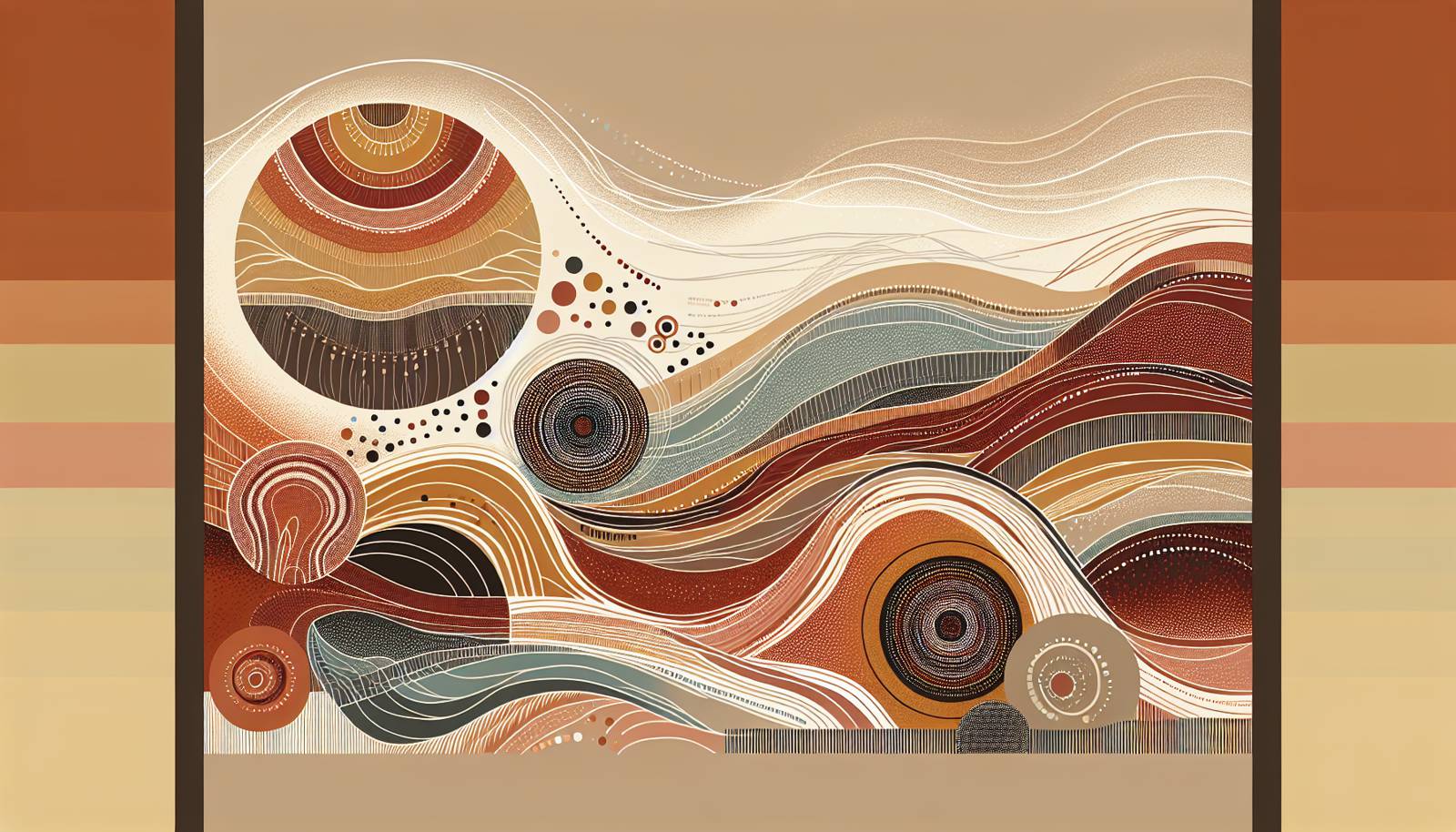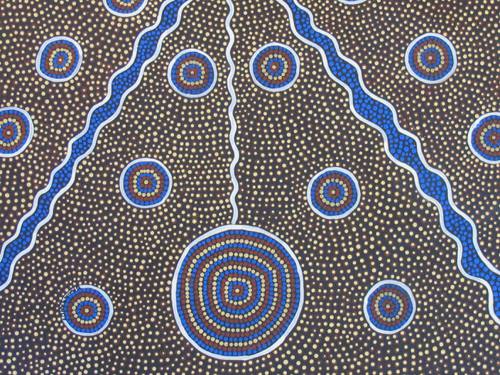
FAQ About Influence of Indigenous Australian Art on Contemporary Practices

What is Indigenous Australian art?
Indigenous Australian art is one of the oldest ongoing artistic traditions in the world, characterized by its unique use of symbolism, traditional techniques, and storytelling. It includes a variety of forms such as paintings, carvings, weavings, and ceremonial performances that often depict the natural environment, spirituality, and cultural history of Indigenous Australians.

How does Indigenous Australian art influence contemporary art practices?
Indigenous Australian art influences contemporary art through its distinctive use of color, symbolism, and connection to cultural storytelling. Contemporary artists worldwide draw inspiration from Aboriginal dot paintings, earth-toned palettes, and the deep connections between the artwork and the land. This influence fosters a broader understanding of cultural identity and environmental themes in modern art.

Why is storytelling important in Indigenous Australian art?
Storytelling is a vital component of Indigenous Australian art as it serves as a means of preserving and passing down cultural knowledge, history, and spiritual beliefs from one generation to the next. The narratives depicted in art inform viewers about the Dreamtime and other significant cultural elements, making it an essential aspect of cultural identity and expression.

What are some common themes found in Indigenous Australian art?
Common themes in Indigenous Australian art include the Dreamtime (Creation stories), connection to the land, ancestral heritage, and natural environments. These themes often highlight the spiritual relationship between Indigenous Australians and their country, serving as a means of cultural expression and identity.

How does Indigenous Australian art address environmental themes?
Indigenous Australian art frequently reflects a deep connection to the land and environmental stewardship. Artists often depict native flora and fauna, landscapes, and water sources, emphasizing the importance of sustainable practices and the sacred nature of the natural world. This art underscores the integral role of environment in cultural stories and identity.

Can contemporary non-Indigenous artists create art inspired by Indigenous Australian styles?
While non-Indigenous artists can draw inspiration from Indigenous Australian styles, it is crucial that they do so respectfully and ethically. This includes acknowledging the source of their inspiration, understanding cultural significance, and collaborating with Indigenous artists when possible. Misappropriating these styles without understanding can lead to cultural insensitivity and exploitation.

How have Indigenous Australian artists been recognized globally?
Indigenous Australian artists have gained international acclaim through exhibitions, awards, and representation in prestigious galleries worldwide. Artists like Emily Kame Kngwarreye and Clifford Possum Tjapaltjarri have significantly impacted the global art scene by sharing Indigenous culture and stories through their work, contributing to greater recognition and appreciation of their artistic traditions.

What role does art play in Indigenous Australian cultural identity?
Art is central to Indigenous Australian cultural identity as it encapsulates spiritual beliefs, historical narratives, and connection to the land. It is a medium through which culture is preserved, expressed, and shared both within Indigenous communities and with the broader world, maintaining cultural continuity and resilience against historical challenges.

How do contemporary artists incorporate Indigenous Australian influences into their work?
Contemporary artists incorporate Indigenous Australian influences by adopting visual elements such as patterns, colors, and storytelling techniques. They may also explore similar themes such as connection to the land and cultural identity. Additionally, some artists engage directly with Indigenous communities to ensure respectful and informed integration of these influences into their work.

What is the Dreamtime, and how is it depicted in Indigenous Australian art?
The Dreamtime, or Dreaming, is a foundational spiritual concept in Indigenous Australian culture that encompasses the creation myths and sacred stories of the land and its people. Artworks portraying the Dreamtime often include symbolic representations and use traditional patterns and colors to convey stories about ancestors and the creation of the world.

How do Indigenous Australian artists use symbolism in their artwork?
Indigenous Australian artists use symbolism as a way to convey complex narratives and cultural concepts. Symbols often represent elements of the natural world, human relationships, and spiritual beliefs. They are integrated into artworks in both abstract and representational forms, allowing for a rich tapestry of meaning that can be interpreted in various cultural contexts.

What materials are commonly used in Indigenous Australian art?
Traditional Indigenous Australian art commonly uses materials sourced from the natural environment, such as ochre, bark, wood, and natural fibers. These materials connect the artwork to the landscape physically and spiritually. In contemporary practices, artists may also use modern materials like acrylics and canvas while maintaining traditional techniques and cultural significance.

How are Indigenous Australian art styles preserved today?
Indigenous Australian art styles are preserved through education, community initiatives, and cultural centers that support and teach traditional artistic practices. Younger generations are encouraged to learn from elders, participate in art-making, and engage with cultural activities to ensure these styles continue to thrive. Artistic innovations are also embraced while maintaining respect for traditional methods.

Is there a difference between Indigenous art from various regions of Australia?
Yes, there is considerable diversity in Indigenous art across different regions of Australia, as each community has its own unique styles, techniques, and symbolisms. For instance, the dot paintings traditionally associated with Central Desert communities differ significantly from the bark paintings of Arnhem Land or the wood carvings of the Tiwi Islands, reflecting the geographical and cultural differences within the country.

How have modern Indigenous Australian artists contributed to global environmental discussions?
Modern Indigenous Australian artists contribute to global environmental discussions by highlighting themes of land stewardship, sustainability, and the sacred relationship between people and nature in their works. Their art often raises awareness about ecological issues, reflecting traditional knowledge systems that can inform contemporary environmental practices and policies worldwide.

What impact has Western art had on Indigenous Australian art?
Western art has influenced Indigenous Australian art through the introduction of new materials and techniques, such as acrylic paints and western-style canvases. While some artists have embraced these changes to explore new forms of expression, others remain committed to traditional methods. This interaction has led to a dynamic evolution of Indigenous art that respects traditional roots while engaging with contemporary art forms.

How do indigenous art festivals promote Australian Indigenous art?
Indigenous art festivals, such as the Darwin Festival and Desert Mob, promote Australian Indigenous art by providing platforms for artists to showcase their work to diverse audiences. These festivals celebrate cultural heritage, foster dialogue between Indigenous and non-Indigenous communities, and enhance the visibility and appreciation of Indigenous artistic practices on both national and international stages.

What challenges do Indigenous Australian artists face today?
Indigenous Australian artists face challenges such as cultural appropriation, lack of representation in mainstream galleries, and economic barriers. Additionally, they often work to balance the preservation of traditional practices with the pursuit of contemporary expression. Initiatives that support equitable access to artistic platforms and promote cultural education are essential for overcoming these challenges.

How do educational programs incorporate Indigenous Australian art traditions?
Educational programs incorporate Indigenous Australian art traditions by teaching students about the history, techniques, and cultural significance of these art forms. Schools and universities may invite Indigenous artists to conduct workshops, offer courses on Indigenous art history, and facilitate community art projects that encourage respectful engagement and appreciation for these traditions.

What is the future of Indigenous Australian art in contemporary practices?
The future of Indigenous Australian art in contemporary practices looks promising with growing recognition and appreciation on global platforms. Artists are increasingly integrating digital mediums and cross-cultural collaborations, expanding the reach and impact of Indigenous art. This evolution continues to honor traditional roots while embracing innovation, ensuring that Indigenous narratives remain a dynamic part of the global art conversation.
